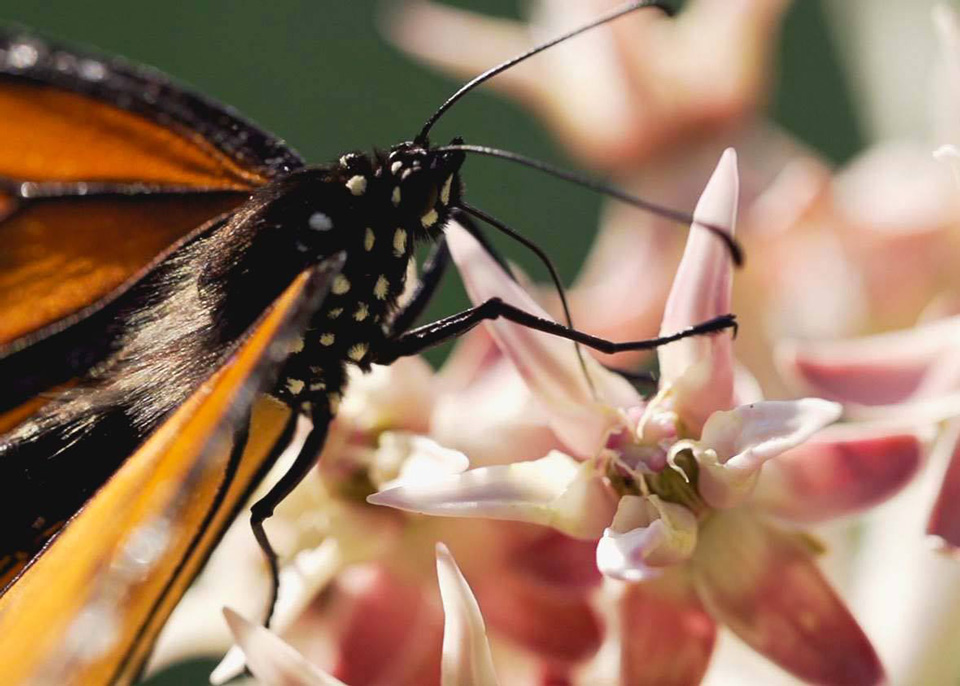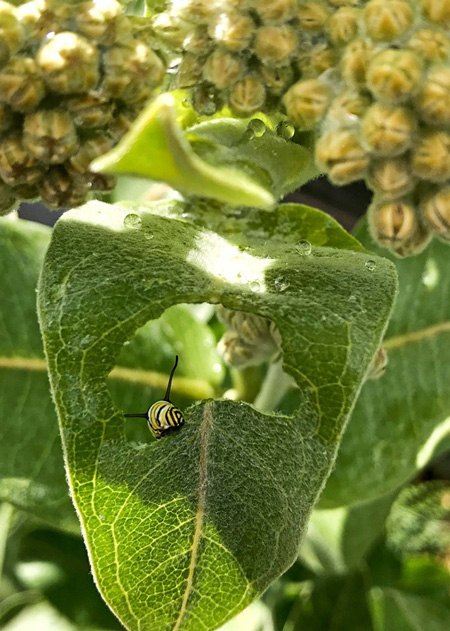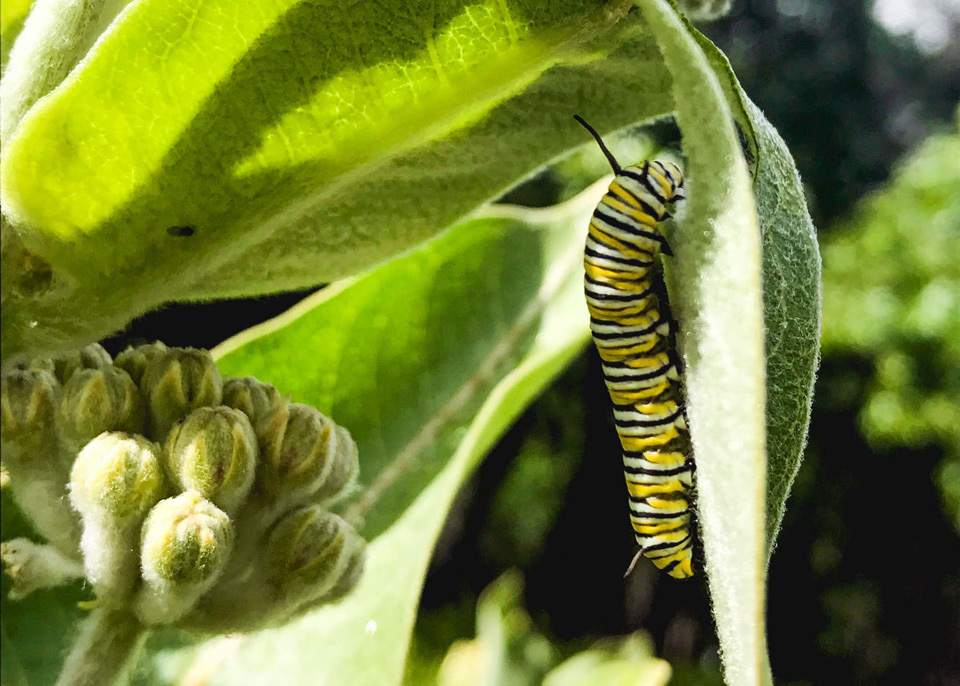
A monarch butterfly drinking the nectar of a showy milkweed flower. NPS Photo
August 11, 2019 - Yosemite National Park Officials report the monarchs have returned to Yosemite! It has been exciting to see these migrating butterflies in the park during the past month. This
 return is especially welcome given the news that Western monarch butterfly populations are down 99.4% since their 1980's population numbers, and down 86% from last year alone. Monarchs need a diversity of flowering plants and milkweeds along their migration route to fuel their flight and to survive. The milkweed plant is vital because it’s the only place these butterflies will lay their eggs. When the egg hatches, the caterpillar eats the leaves of the milkweed. Though toxic, the compounds found in milkweeds don't hurt the brightly colored caterpillars and instead protects them from predators who think twice before trying to eat them.
return is especially welcome given the news that Western monarch butterfly populations are down 99.4% since their 1980's population numbers, and down 86% from last year alone. Monarchs need a diversity of flowering plants and milkweeds along their migration route to fuel their flight and to survive. The milkweed plant is vital because it’s the only place these butterflies will lay their eggs. When the egg hatches, the caterpillar eats the leaves of the milkweed. Though toxic, the compounds found in milkweeds don't hurt the brightly colored caterpillars and instead protects them from predators who think twice before trying to eat them.(Left) Monarch butterfly caterpillar eating the leaf of a milkweed plant. NPS photo
While Yosemite is a relatively safe haven for monarchs, much of their habitat has been lost due to historic and current disturbance, as well as invasive plants that out-compete native wildflowers. That's why we are working to restore monarch and other pollinator habitat in Yosemite with the help of many volunteers and partners like the Youth Conservation Corps.
These migratory butterflies and other pollinators need native flowering plants and milkweeds along their entire migration corridor and you can help! Do your part to help monarchs and pollinators by staying off of meadow resources by using designated paths and boardwalks, and by giving plants a chance by not walking on or picking them. Whether it's in Yosemite or your backyard, providing a space for native plant habitat is crucial to the survival of pollinator species.
This project was made possible by funding from our partner, Yosemite Conservancy.

Monarch caterpillar making its way up the stem of a milkweed plant to eat the leaf. NPS Photo
Source: NPS
Related: Plantings Aim to Help Monarch Butterflies, California Farm Bureau Federation Reports
